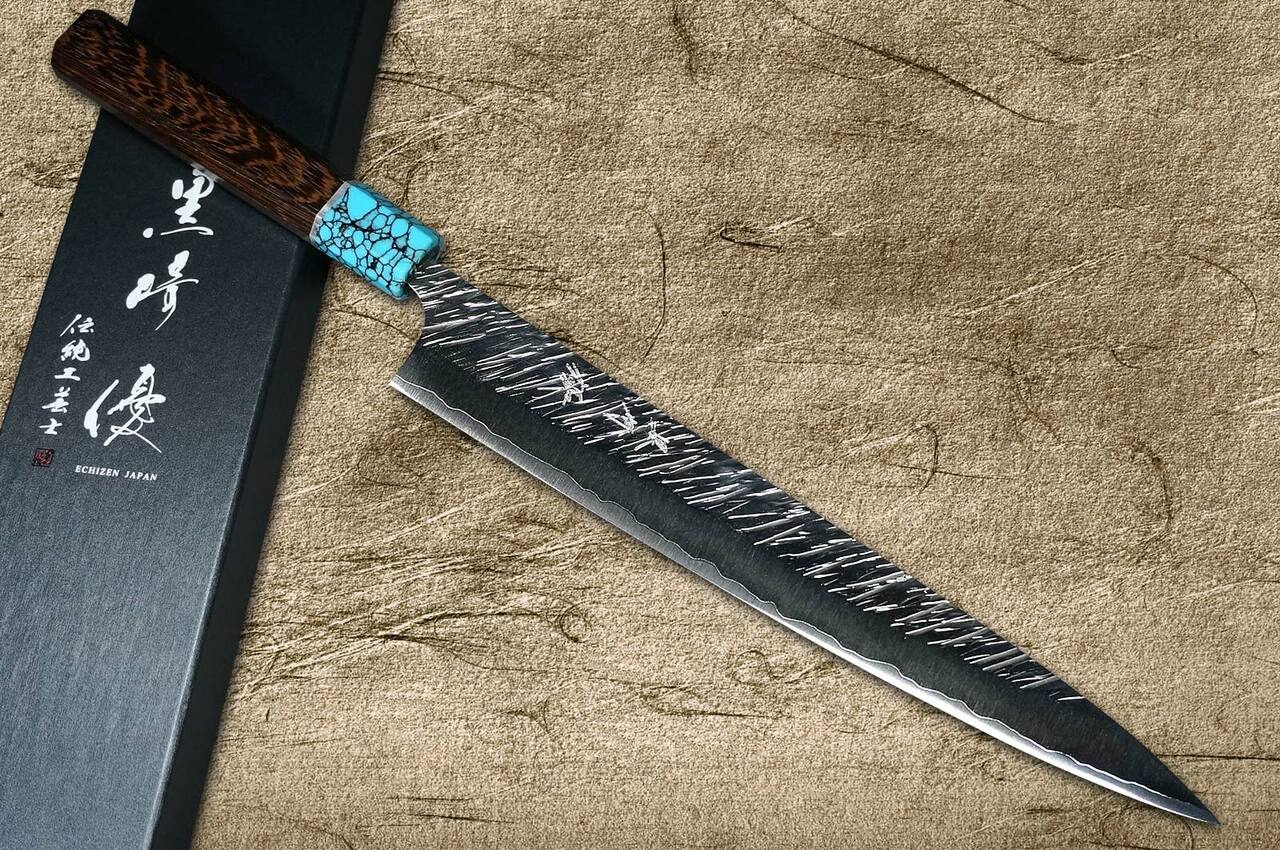img by : https://www.hocho-knife.com/
Among the world’s culinary delicacies, Japanese cuisine is never to be opted out. Due to its increasing popularity, Japanese food is literally everywhere – all around the globe. Despite its delicate nature and subtleness found in all selections of ingredients, Japanese cuisine is mostly known for its authenticity and exoticness when it comes to the mastery of the blades – the techniques to craft traditional dishes.
Japanese cuisine and the traditional techniques required to craft them holds a high significance and plays an important role in the fame it earns up until today. The traditional techniques of blade forging have placed Japan among the world’s destinations with the best culinary equipment and tools for the preparation of dishes. Professionals from different parts of the world continue to place their trust on Japanese knives due to durability, longevity, blade sharpness, premium quality, unique designs, rust resistance, and most of all – high performance and efficiency.
As the mastery of the blades and the techniques essential to make mouth-watering, delicious sushi and sashimi menus like your favorite Sake sushi or Nigiri, diners and gourmets are always in the search for authentic Japanese food restaurants that will enable them to get the best out of the dining experiences. In Omakase restaurants, head chefs and culinary experts are at the top of their games at introducing original recipes and signature menus, baring all the food preparation processes at the open sushi bars. With this being the highlight of Japanese food, specifically when it comes to sushi and sashimi, cordon bleus are very much into the swift chops and accurate slices the blade makes. As a result, Japanese food chefs and professionals are always in the search for just the ‘best’ culinary tools and efficient, suitable Japanese blades to aid them in their creations.
Although there are quite a few top-quality knife brands in Japan, among the top-tier, professional Japanese knife brands, one stands out for unique designs along with extreme blade sharpness. Yu Kurosaki is a Japanese knife brand renowned for original blade designs, premium quality, unique handle materials, durability, rust resistance, wear resistance, and the most important of all – extreme blade sharpness. Yu Kurosaki combines traditional blade forging techniques with his own idealistic approaches to create distinct and high-performance Japanese knives for the crafting of Japanese delicacies. As Japan’s top blacksmith, Yu Kurosaki and a crew of highly-skilled craftsmen work together to create unique knives in various types, for varying uses.
Top Selections
Yu Kurosaki’s top knife selections include: Yu Kurosaki SPG2 Clad FUJIN WA WGTCA, Yu Kurosaki R2(SG2) Hammered SHIZUKU WA RS8P, and Yu Kurosaki Aogami No.2 Mirror Finished JP. Although there is a wide selection of knife models deemed suitable for varying uses; these top three knife models are rated best.
Yu Kurosaki SPG2 Clad FUJIN WA WGTCA comes with a ‘FUJIN’ hammered texture and an extremely hard blade made out of the Super Gold 2 steel. As one of the hardest steels in the world, this FUJIN knife series provides extreme sharpness that comes along with rust resistance – indeed among the top series Yu Kurosaki has created. Yu Kurosaki R2(SG2) Hammered SHIZUKU WA RS8P also crafted out of the famous Super Gold 2 steel, comes with an artistic SHIZUKU hammered texture that conjures the droplets of pouring rain. The special handle is made out of the octagonal-shaped Rosewood with White Packer wood ferrule for enhanced beauty and efficiency. Blade performance and longevity guaranteed, it is also one of the best series in the Yu Kurosaki collection. Last but not the least of all, Yu Kurosaki Aogami No.2 Mirror Finished JP –a knife series with the Aoko or Blue Paper (Aogami) No.2 steel, made from the famous Yasugi steel or also known as Prime High Carbon steel which guarantees rust resistance and blade longevity. Known to be among the toughest of all series, this is also Yu Kurosaki’s ‘ace’.
